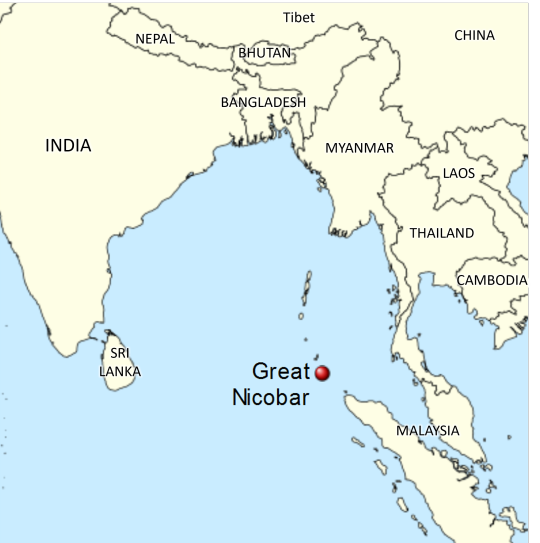#wellness tourism India
Explore tagged Tumblr posts
Text
India offers a wide variety of tourism packages catering to all types of travelers. Whether you're looking for cultural, adventure, or wellness packages, this article will guide you through the best options to experience the diverse offerings of India.
#tourism packages India#types of travel packages India#Indian tourism#India tour options#travel packages#cultural tours India#adventure tourism India#wellness tourism India
0 notes
Text

Medical tourism at Harshamitra cancer and multi-specialty cancer hospital
To read the full article visit our website by clicking on this link
#healthcare#trichy#hospital#cancer awareness#cancer#india#medicine#awareness#health and wellness#health care#medical tourism#medical tips#tourism#travel
0 notes
Text
Explore Wellness Tourism in India with Treatians
Discover the essence of wellness tourism in India with Treatians. From rejuvenating therapies to holistic experiences, plan your journey towards a healthier lifestyle with our trusted platform.
0 notes
Text
Medical Tourism Company that guides overseas patients to best doctors, hospitals, and the latest techniques in India. Makes medical visa process easy.
0 notes
Text
#top heart surgeons in India#best heart surgeons in India#heart surgeons in India#Health#healthcare#health and wellness#health & fitness#medicine#best medical tourism company in india
0 notes
Text
Genocide experts warn that India is about to genocide the Shompen people
Who are the Shompen?
The Shompen are an indigenous culture that lives in the Great Nicobar Island, which is nowadays owned by India. The Shompen and their ancestors are believed to have been living in this island for around 10,000 years. Like other tribes in the nearby islands, the Shompen are isolated from the rest of the world, as they chose to be left alone, with the exception of a few members who occasionally take part in exchanges with foreigners and go on quarantine before returning to their tribe. There are between 100 and 400 Shompen people, who are hunter-gatherers and nomadic agricultors and rely on their island's rainforest for survival.

Why is there risk of genocide?
India has announced a huge construction mega-project that will completely change the Great Nicobar Island to turn it into "the Hong Kong of India".
Nowadays, the island has 8,500 inhabitants, and over 95% of its surface is made up of national parks, protected forests and tribal reserve areas. Much of the island is covered by the Great Nicobar Biosphere Reserve, described by UNESCO as covering “unique and threatened tropical evergreen forest ecosystems. It is home to very rich ecosystems, including 650 species of angiosperms, ferns, gymnosperms, and bryophytes, among others. In terms of fauna, there are over 1800 species, some of which are endemic to this area. It has one of the best-preserved tropical rain forests in the world.”
The Indian project aims to destroy this natural environment to create an international shipping terminal with the capacity to handle 14.2 million TEUs (unit of cargo capacity), an international airport that will handle a peak hour traffic of 4,000 passengers and that will be used as a joint civilian-military airport under the control of the Indian Navy, a gas and solar power plant, a military base, an industrial park, and townships aimed at bringing in tourism, including commercial, industrial and residential zones as well as other tourism-related activities.
This project means the destruction of the island's pristine rainforests, as it involves cutting down over 852,000 trees and endangers the local fauna such as leatherback turtles, saltwater crocodiles, Nicobar crab-eating macaque and migratory birds. The erosion resulting from deforestation will be huge in this highly-seismic area. Experts also warn about the effects that this project will have on local flora and fauna as a result of pollution from the terminal project, coastal surface runoff, ballasts from ships, physical collisions with ships, coastal construction, oil spills, etc.
The indigenous people are not only affected because their environment and food source will be destroyed. On top of this, the demographic change will be a catastrophe for them. After the creation of this project, the Great Nicobar Island -which now has 8,500 inhabitants- will receive a population of 650,000 settlers. Remember that the Shompen and Nicobarese people who live on this island are isolated, which means they do not have an immune system that can resist outsider illnesses. Academics believe they could die of disease if they come in contact with outsiders (think of the arrival of Europeans to the Americas after Christopher Columbus and the way that common European illnesses were lethal for indigenous Americans with no immunization against them).
And on top of all of this, the project might destroy the environment and the indigenous people just to turn out to be useless and sooner or later be abandoned. The naturalist Uday Mondal explains that “after all the destruction, the financial viability of the project remains questionable as all the construction material will have to be shipped to this remote island and it will have to compete with already well-established ports.” However, this project is important to India because they want to use the island as a military and commercial post to stop China's expansion in the region, since the Nicobar islands are located on one of the world's busiest sea routes.
Last year, 70 former government officials and ambassadors wrote to the Indian president saying the project would “virtually destroy the unique ecology of this island and the habitat of vulnerable tribal groups”. India's response has been to say that the indigenous tribes will be relocated "if needed", but that doesn't solve the problem. As a spokesperson for human rights group Survival International said: “The Shompen are nomadic and have clearly defined territories. Four of their semi-permanent settlements are set to be directly devastated by the project, along with their southern hunting and foraging territories. The Shompen will undoubtedly try to move away from the area destroyed, but there will be little space for them to go. To avoid a genocide, this deadly mega-project must be scrapped.”
On 7 February 2024, 39 scholars from 13 countries published an open letter to the Indian president warning that “If the project goes ahead, even in a limited form, we believe it will be a death sentence for the Shompen, tantamount to the international crime of genocide.”
How to help
The NGO Survival International has launched this campaign:
From this site, you just need to add your name and email and you will send an email to India's Tribal Affairs Minister and to the companies currently vying to build the first stage of the project.
Share it with your friends and acquittances and on social media.
Sources:
India’s plan for untouched Nicobar isles will be ‘death sentence’ for isolated tribe, 7 Feb 2024. The Guardian.
‘It will destroy them’: Indian mega-development could cause ‘genocide’ and ‘ecocide’, says charity, 8 Feb 2024. Geographical.
Genocide experts call on India's government to scrap the Great Nicobar mega-project, Feb 2024. Survival International.
The container terminal that could sink the Great Nicobar Island, 20 July 2022. Mongabay.
[Maps] Environmental path cleared for Great Nicobar mega project, 10 Oct 2022. Mongabay.
#shompen#genocide#stop genocide#india#indigenous#indigenous peoples#indigenous rights#human rights#anthropology#stateless nations#end occupation#andaman and nicobar islands#nicobar islands#great nicobar#💬#asia#geopolitics#ecocide#sustainability
23K notes
·
View notes
Text

Yoga Meditation Classes in Rishikesh. Rishikesh is a hub and Yoga City of India in Uttarakhand. Login: https://www.southasiavoyage.com
#yoga#meditation#yoga pose#yoga classes#woman#nature#wellness#health & fitness#yoga motivation#yoga inspiration#spirituality#india#uttarakhand#rishikesh#yogapractice#yoga girl#yogini#travel#india tourism
1 note
·
View note
Text
Maven Socials: Explore India’s Hidden Gems

Namaste, fellow adventurers! Are you yearning to explore the vibrant tapestry of India, a land steeped in ancient traditions, mouthwatering cuisine, and breathtaking landscapes? Look no further than Maven Socials, your one-stop platform for curating unforgettable experiences right here in your own backyard.
Maven Socials isn’t just another travel company. We are a passionate community dedicated to unlocking the magic of India, from the snow-capped Himalayas to the sun-drenched beaches of Goa. Whether you seek serenity in an Ayurvedic retreat, tantalize your taste buds on a culinary adventure through bustling street markets, or crave the thrill of exploring ancient ruins, Maven Socials empowers you to design the perfect Indian itinerary tailored to your desires.
This comprehensive guide delves into the heart of Maven Socials, equipping you to navigate our platform and discover the hidden wonders of India:
A Treasure Trove of Indian Delights: Immerse yourself in the rich tapestry of Indian culture, each region boasting unique experiences. Explore the majestic forts of Rajasthan, wander through the bustling bazaars of Delhi, or marvel at the architectural brilliance of the Taj Mahal. Mavensocials curates itineraries that cater to every interest, ensuring you experience the true essence of India.
Insider Tips from Seasoned Maven Socials: Ditch the generic tourist guides! With Maven Socials, you gain access to a thriving community of India enthusiasts who share their intimate knowledge of the country. Discover hidden temples, secret spice markets, and off-the-beaten-path adventures that will enrich your travels and leave you feeling like a true local.
Wellness Getaways for Body and Soul: Indulge in restorative Ayurvedic retreats designed to rejuvenate your mind, body, and spirit. Explore yoga ashrams nestled in the serene foothills of the Himalayas, detoxify at a luxury spa nestled in the verdant jungles of Kerala, or learn ancient meditation techniques from a renowned guru. Maven Socials curates the perfect wellness escape for every need.
Culinary Delights for the Discerning Palate: Embark on a gastronomic odyssey across the diverse culinary landscape of India. Take a cooking class in a local village homestay, indulge in street food delicacies from bustling city markets, or savor the rich flavors of regional specialties like Hyderabadi biryani or Goan seafood curries. Maven Socials caters to the discerning foodie with a smorgasbord of culinary adventures guaranteed to tantalize your taste buds.
Thrilling Escapades for the Adventurous Soul: Are you an adrenaline junkie seeking adventure? Maven Socials ignites your adventurous spirit with experiences that will take your breath away. Go white-water rafting down the Ganges River, trek through the breathtaking valleys of Kashmir, or embark on a wildlife safari in the jungles of Ranthambore National Park. We curate itineraries that push your boundaries and create memories you’ll cherish forever.
Building a Community of Like-Minded Maven Socials: Connect with fellow India enthusiasts on the Maven Socials website. Share stories, swap travel tips, and forge lasting friendships with passionate explorers from across the country. Our vibrant community allows you to learn from others and inspire fellow travelers with your own experiences.
Beyond Inspiration: Crafting Your Dream Indian Journey with Maven Socials
Maven Socials goes beyond showcasing breathtaking destinations. We empower you to co-create your dream Indian itinerary. Our expert travel consultants work closely with you to understand your interests, budget, and travel style. They tailor experiences that reflect your unique desires, ensuring an unforgettable adventure that truly captures the essence of India.
Ready to embark on your next unforgettable journey within India with Maven Socials? Explore our website to discover a world of curated experiences and unlock the travel maven within you!
Let Maven Socials be your guide to a world of transformative experiences within India. It’s time to start collecting memories, not just souvenirs!
#maven socials#india#travel#food and drinks#wellness#health and wellness#things to do in india#tourism
0 notes
Text
Cancer defeat through Therapy

CAR T cell therapy, a groundbreaking form of immunotherapy, is revolutionizing cancer treatment. This innovative therapy harnesses the power of the body's immune system to target and destroy cancer cells.
CAR T cell therapy involves genetically modifying a patient's own T cells to recognize and attack cancer cells. This process begins with the collection of the patient's T cells through a process called leukapheresis. These T cells are then genetically engineered in a laboratory to express chimeric antigen receptors (CARs) on their surface. These CARs enable the T cells to recognize specific proteins, or antigens, found on the surface of cancer cells.
Once the CAR T cells have been engineered, they are expanded in the laboratory to generate a large population of cancer-fighting cells. These modified CAR T cells are then infused back into the patient's bloodstream, where they can seek out and destroy cancer cells throughout the body.
CAR T cell therapy has shown remarkable success in the treatment of certain types of blood cancers, such as leukemia and lymphoma. Patients who have failed to respond to traditional treatments, such as chemotherapy or stem cell transplantation, have experienced dramatic and often long-lasting remissions following CAR T cell therapy.
Despite its remarkable efficacy, CAR T cell therapy also comes with potential risks and side effects, including cytokine release syndrome (CRS) and neurotoxicity. These side effects can range from mild to severe and require careful management by healthcare professionals.
As research in CAR T cell therapy continues to advance, scientists are exploring its potential applications in treating other types of cancer, including solid tumors. With ongoing innovation and improvements in technology, CAR T cell therapy holds immense promise as a transformative approach to cancer treatment, offering hope to patients facing even the most challenging diagnoses.
Connect with us at Alshifa Healthcare Services
Or WhatsApp us at +91 7669 900 900
#medical facilitator#liver transplant#healthcare services#best doctor in india#medical tourism#treatment in india#surgery#doctor#cancer#medical care#hospital#health#health care#oncology#healthcare#treatment#doctors#health and wellness
0 notes
Text
1 note
·
View note
Text

Rawa Health Services
Our medical tourism company in India offers a wide range of medical specialties to meet the diverse needs of our patients. From cardiology and neurology to oncology and orthopedics, we provide access to top-rated doctors and hospitals across all medical fields. Our network of medical professionals is trained in the latest techniques and technologies and has extensive experience treating a range of conditions. Whether you are seeking preventative care, diagnostic services, or specialized treatment, our team of medical experts can provide you with the care and attention you need. We are committed to ensuring that our patients receive the highest quality medical care, and we work tirelessly to ensure that you have the resources and support you need to achieve optimal health outcomes. Trust us to connect you with the best medical specialists in India, and to provide you with the personalized care and attention you deserve.
for more information visit our website http://rawahealth.com/
#healthcare#health and wellness#treatment#health#rawahealth#rawahealth.com#medicaltourism#kidney transplant#liver transplant#kneereplacement#hip replacement#medicalprocedure#medical assistance#medical tourism in india#rawahealthservices#best orthopaedic doctor in delhi#top orthopaedic hospital in delhi#orthopaedic surgeon in delhi#cancer treatment#generalsurgery#generalsurgeon#heart transplant#heart transplant in india#kidney transplant in india#kidney transplant surgery#kidney transplant cost in india#robotic kidney transplant in india#kidney#kidney transplant recovery#kidney transplantation
0 notes
Text

Medical Tourism at Harshamitra Cancer and Multi-specialty Cancer Hospital
If you want to read the full article click on the link.
#cancer#cancer awareness#trichy#healthcare#hospital#india#medicine#health and wellness#awareness#health care#medical tourism#harshamitra hospital#harshamitra#doctors#treatment#cancer care#cancer treatment#cancer prevention
0 notes
Text
Explore Wellness Tourism in India with Treatians
Looking for wellness tourism in India? Treatians offers a comprehensive range of medical tourism services that ensure seamless travel for your healthcare needs. Whether it’s advanced treatments or holistic health packages, we connect you with top hospitals and expert doctors in India. Experience stress-free planning and personalized assistance with Treatians as you embark on your wellness journey. Explore more today!
0 notes
Text

Photo (from 1967) by Henry Grossman.
“[David Griffiths] observed that The Beatles had already done a great deal for India by making the West more conscious of Indian art, by helping Indian tourism and by giving the people some sense of pride that the world’s most famous entertainers admired and drew from Indian music — notably, of course, in George’s own superb Within You Without You on the Sgt. Pepper LP. ‘Yes, I felt that was well worth doing,’ said George. ‘There are so many people who don’t understand the sentiments of “Within You Without You.” They can’t see outside themselves, they’re too self-important and can’t see how small we all are.’“ - Record Mirror, July 27, 1968
#George Harrison#quote#quotes about George#quotes by George#1967#1960s#1968#Within You Without You#The Beatles#Harrison spirituality#Sgt. Pepper's Lonely Hearts Club Band#fits queue like a glove
101 notes
·
View notes
Text
Engagement of QL Fandom in Indian Queer Media
I was tagged by @lurkingshan and invited to respond to an ask she received from @impala124 that noted the absence of India in the Asian queer media spaces and discussions, and questioned the reasons behind it. @starryalpacasstuff has also responded to it in a great post (check out the reblog additions for a treasure trove of Indian queer media recs), discussing, among many things, Korea’s culture export aiding their queer media ventures, access to Indian queer media, and the quality of Indian queer media. @twig-tea’s addition discussed the ease of access of Thai BLs via YouTube and how it prompted Korea and Japan to re-enter the genre.
My thoughts on Indian queer media are complicated and involve several detours to understand Indian media culture, its economic power, and how it navigates international viewership. For context, I am an Indian cinephile who grew up watching a wide variety of Indian media in terms of both language and genre. I naturally transitioned into watching Western content as globalization of the 2010s brought HBO and Comedy Central to Indian screens, and later sought out queer media, Asian media and Asian queer media on the internet.
Indian Media Industry - A Primer
I know there are a lot of countries right now that produce QL media, so I am gonna mainly consider Thailand, Japan, and Korea, the three countries most prolific with ql, for the purpose of this discussion. All of these countries, while regionally diverse, have managed to considerably homogenize in language and culture over the course of history and colonization. India, on the other hand, is still significantly and distinctly diverse in language, culture, religion, food, media styles, social norms, and on and on. India has 22 official languages and thousands of regional ones that are used in various capacities everyday. This diversity is then reflected in the media produced by India, with multiple powerhouse film industries dominating box offices simultaneously. Bollywood is the biggest one and obviously well known internationally, but Tamil, Telugu, Malayalam, Kannada, Punjabi, Bengali-language film industries are successful in their own right and consistently produce box office hits and self-sustain in the larger Indian media landscape. This makes domestic media highly regional in India. Even today, in the age of social media, it takes a box office success to the tune of hundreds of millions of rupees for a film to break out of its domestic audience and cross over into other Indian states.
This diversity has also led to the different industries developing media styles unique to them. I watched this video a while ago of a creator documenting his experience of dipping toes into Indian Cinema for the first time, and he ends up covering three movies from three different industries, because the pathos of each of them is so fundamentally different yet effective in their own ways. This diversity also applies to the television industry, both traditional cable TV soaps, and the modern shows made for streaming sites. And all of this, *waves hands*, presents a set of challenges like no other country faces for both Indian queer creators and Indian queer media audiences.
The Challenges for Creators
Since the Indian media industry is not a big monolith and is made up of multiple film industries, queer creators who are trying to get their foot in the door will face a unique uphill battle in whichever regional industry they’re trying to break into. And trying to research, learn, and understand each and every single one of them will take me and my non-existent research team years, so the simpler thing to do would be listing the factors that have worked for other countries to foster their media industries to produce QL content, and discuss if India could replicate them. The list goes like this:
Japan’s rich history in yaoi
Thailand’s use of BL as a soft power to promote tourism
Korea’s culture export via kpop and other media
While India does have religious mythology that discusses sex, gender and queerness, it is often subtext with a lot of intersectionality. Does Ardhanarishvara represent fluid gender, or a symbol of harmony, or both? The debates are endless. Japan’s yaoi roots are as deep as they are explicit. And this rich history could be why the Japanese domestic audience is open to queer media even when the country is still conservative.
Thailand’s rise as a major player in the QL industry is remarkable, but there is a case to be made that the country’s media industry was directly and indirectly boosted by the government’s interest in establishing revenue from tourism, and exporting culture to international audiences via food and media. While the revenue from tourism in India is substantial, the Indian economy is not built on it. And the Indian media industry is thriving and regularly makes bank with their already established content models, so the producers have a pretty low incentive to deviate and fund queer media.
I bet every coin I own that not a single one of us on this hellsite have successfully eluded the allure of Korean media in our lives. The Korean media industry is a well-calibrated machine that shall and will target every single human into funneling their time, attention and money into the Korean culture and economy. And I think queer creators looking to make queer content in Korea would’ve had good incubation in an industry that was looking to make as much content as possible. And once again, while Indian movies have significant international box office collections, that is not where the Indian media industry, and just India in general, makes its money. The priorities are just not the same. And to be perfectly honest, India is nowhere near the level of Korea at producing and exporting television shows to international audiences.
All of this is a long winded way of saying that the conditions required to foster a QL industry in India are not the same as what we have seen work so far from the other major players. And sadly no one has really figured out the winning formula yet.
These are just a few reasons, and I haven’t even discussed nepotism and how painful class mobility is in India, making it even harder for new queer creators to break into the industry. There’s a reason why movies with queer representation like Badhaai Do, Shubh Mangal Zyada Saavdhan, Ek Ladki Ko Dekha Toh Aisa Laga, and Kapoor & Sons all feature characters in the upper middle class or above. Hell, they’re even played by actors whose portfolio is already filled with daring and experimental roles, or by first- or second-gen nepo babies who would literally have nothing to lose from the potential backlash for playing a queer character. Poor, queer characters in Indian media have never been a part of a fluffy romance as far as I know. They are reserved for the gritty dramas where intersectionality of queerness, poverty, class and caste could be examined.
The Challenges for the Audience
And once again, all of this, *aggressively waves hands*, makes things harder for even the domestic audience to engage with Indian queer media, let alone international audiences. Kathaal - The Core, a 2023 Malayalam movie about a queer man in his fifties coming out of the closet and contesting in his village body elections, was a box office success in Kerala, and I can tell y’all with complete certainty that not many people outside of Kerala would’ve even heard of it. And this was not some small indie venture – in fact, the lead characters were played by Mammootty and Jyothika, who are both absolute legends in their own right in the South Indian film industry.
Super Deluxe was a 2019 Tamil-language black comedy film that tells four interwoven stories that run in parallel, and one of the stories is about a trans woman who, pre-transition, was married and had a son. She returns to her family as her post-transition self after years of disappearance, and the film engages in conversation around sex and gender, through the innocent questions of her young son. The movie is gorgeously made, and outrageously sharp and witty in its commentary on society’s views on sex, morality, religion and family. And once again, I don’t think it is well-known outside of the domestic and international award-circuit audiences it was promoted to (last I checked, it was available to domestic audiences on Netflix).

Sometimes, even the domestic audience might miss the queer representation in their regional media when it is indie enough to not get aggressively promoted. The Hindi-language anthology movie from Netflix, Ajeeb Daastaans (2021), featured a story where two women from different caste and social class meet at the workplace (the sapphic story, Geeli Pucchi, starts at 1:17:05, if anyone wants to check it out). It served biting commentary on the intersectionality of queerness, misogyny, caste and class. And once again, I’ve never found a person with whom I could discuss it with (other than my mom, with whom I watched it).
And sometimes, even when a massive show with queer representation is well promoted and well received by critics, it still manages to fly under the radar in Indian queer fandom spaces. Amazon Prime India spent a lot of coin on the show Made in Heaven (2019) – and it was worth it. The show follows the lives of two wedding planners, Tara and Karan. Karan is closeted (except to his close friends) for most of the show, but after he makes some powerful enemies in his line of work, he gets publicly outed, which puts him on the path of dealing with his family’s shades of acceptance, queer rights activism, and reconciling with an old friend. The car scene in episode 9 made me cry, and yet I’ve never read a word about this show from Indian QL fan blogs here on Tumblr.

Following every film and TV show that releases in one language, across all modes and platforms, and keeping an eye out for queer representation is hard enough. Doing it in multiple languages is downright impossible. And then personal preferences come into play. Personally, I enjoy nearly all genres of media, but I am primarily an angst monster, so I seek out and watch sad shit on the regular. All four examples I’ve listed in this section are good queer representations, but they are deeply sad, rage-inducing, heartbreaking and realistic. If one wanted to watch an Indian queer romance that’s inside the bubble, I’m not sure if they can even find one – I have certainly not come across any. Even the queer Bollywood movies designed for a box office run, paying homage to iconic Bollywood romance sequences, were still outside the bubble. When a niche audience like the QL fandom collides with a complex media-churning machine like the Indian media industry that is fundamentally not designed to cater to them, all we get is a lot of puzzled looks and question marks.
A Thought Experiment On The Future Of Indian QLs
Now that I have established the challenges, I want to engage in a little thought experiment – if we were to receive a steady stream of Indian QL content, what would it look like, and how can the fandom engage with it?
If we are looking for content from a stable production entity for Indian queer media, like Thailand’s GMMTV, Japan’s MBS Drama Shower, and Korea’s Strongberry, we would be waiting for a long time, at the very least a decade or two. What we could get are small indie queer shows like Romil and Jugal, squirreled away in a streaming platform exclusive to India and only accessible internationally via VPN. Another example is the list of sapphic shows @twig-tea shared with us a while ago, here. These are gonna be low budget, probably-not-great-quality shows reminiscent of early GMMTV.
Another variety of QL content we could get are the Bollywood queer romance films and TV shows. They will be cheesy and tropey and romantic, and might interact with the bubble, but probably mostly from the safety of an upper middle class setting. This means they would eventually run out of fresh perspectives they could tune into in their limited scope and the stories might turn stale and repetitive (I’m deriving this from the general state of things in the Indian media landscape over the last couple years). International access might be a little easier than the previous case, but not as easy as going to YouTube and hitting play.
The third and final variety are the gritty dramas with heavy social, cultural, religious, gender and class commentary that Indian cinema industry has always made, and has upgraded in the recent years to include queerness. Once again, the access will be hard, but if we are looking for queer stories that also show the audience what it is like being queer in India, beyond the glitz, the glam and the colors of pre-packaged Indian experience often sold to the West, this is where we will find it. Most of it will be sad, but we are a sad bunch who constantly make sad shit, so it will be on brand for us.
And all of these different varieties of content are gonna need to be picked up and promoted by the Indian folks in the QL fandom who are tuned into these regional industries. India not being a cultural monolith that is easy to package and ship is precisely why we have all these beautiful and crazy and sometimes even contradictory styles of media that are offered for us to explore. And therefore, the fandom engagement on Indian QL content would also vastly differ from the fandom engagement for Japan, Thailand and Korea. A dedicated fandom captain might not emerge, but rather, a collective group of folks tuning into and promoting finds from their regional industries would be the way to go. In addition, if this content is not available in English, we would need fan subbers to provide translation expertise to even make it accessible, something we see often for Japanese media on Tumblr.
I know from observation that watching media in a different regional language could sometimes be as foreign to Indian audiences as watching media from other countries. The language, traditions, mannerisms, social mores and food would all be different from region to region, but I guess it would be a good litmus test to observe how well the fandom acclimates to a culture that is so eye-wateringly diverse and not as constantly promoted to them.
When I was texting @waitmyturtles discussing how we can approach answering this question (remember when this all started with a question, some two thousand-ish words ago? Yes, that question), at a point in our conversation I exclaimed "Ugh, everything in India is too complicated!" This long-ass post of mine is in no way the complete account of why things are the way they are in the Indian queer media landscape. But all I know for sure is that it’s not simple. And I really do not want anything related to India to be simple, because being unbearably frustrating and complicated is not a bug, but a feature of India. The road to Indian QLs is unique, but I will do my best to check the paths and share and recommend them to my friends whenever possible. And I invite my fellow Indian QL fans to do the same.
#well i sure didn't start the draft with a plan to write >2k words#and yet here we are#indian queer media#indian ql#fandom meta#long post#media recs#made in heaven#super deluxe#badhaai do#shubh mangal zyada saavdhan
115 notes
·
View notes
Text
HETALIA ☆ WORLD STARS (515)
America really likes to... to be himself (please, admire the car and a "Thank you very much" to my sister, somehow she did it!)
Translation notes at the end: ‘cuz I took a lot of “creative freedoms(?)” and sometimes I forgot the meaning of words (“kanji”). Warning: I don’t know Italian (thanks Reddit), German (my sister knows), French (a bit) and Chinese (ref. Chinese friend).






T/N:
Page 1.
Italia + Pikachu, Itachu or Pikalia, but the last sounds horrible.
"Il faut que jeunesse se passe", the literal and no literal meaning is: "Youth must have its fling", in other words, "let America be America, let him have fun".
"后生可畏". I wasn't sure whether to add Chinese, but if others can, why not China? I really love this Chinese proverb, and I also like to study Confucius (little story) so it's a double prize! A friend of mine told me that in her school they make them read the teachings of Confucius, so… he's pretty popular!
"The hero always arrives late!", this is pretty obvious and well-know, but to be a little more academic: The Hero's Journey. After overcoming the "abyss/defeat", the hero returns transformed to save the day! At the very last minute! Like… the format that all cliché Hollywood movies use.
Page 3.
"Mitico": "great", "fantastic", "brilliant", etc.
"The specified Cost":
France: 1.94% less, I searched, but I couldn't find how much of France's PIB is spent on tourism.
Page 4.
Italy's PIB, it's in euros, but, as in France's case, it has to be converted into dollars to be considered as approximation.
In 2023, the Italian government spent between 40-60 million dollars on tourism, which coincides a little bit with the "-41 in cost" in the letter, I guess.
Page 5.
"Ungeheuer", "monster". I agreed to translate Hetalia with the condition that I have fun, no matter if the words come out of nowhere.
In tourism: America (3) and Italy (4).
Page 6.
"1st Place, America". So I assume his cards will have something to do with that:
1) Technology. Japan (1) and America (2) are the most technologically advanced countries by far.
2) Wall Street. Who doesn't know the place? It is the economic centre of the world... for now.
3) Film Industry. Hollywood is the largest, richest and most important "corporation".
4) NASA. And the other private American companies. I wouldn't say they are number one, but they are well-known.
5) Army. China (1), India (2) and America (3), by number of soldiers.
Against Germany, Italy and Japan (technology):
1) Cars, but unlikely. In order of revenue: (1) Volkswagen, Germany, (2) Toyota, Japan and (3) Stellantis, Netherlands.
2) Engineering. Most of them are either Japanese or German companies.
3) Germany is good and top 5 in 2.
America is really the number one, although most of them are for not-so-good things. It must be its size and diversity, I think, and the two world wars.
"Non è vero?", "It's not true?" or, in this case, "Isn't it?"
Is there a problem/error? Please say so! And thank you for your support!
#hetalia world stars#japanese to english#english translation#hws america#hws china#hws england#hws france#hws germany#hws italy#hws japan#hws canada#hws russia
65 notes
·
View notes